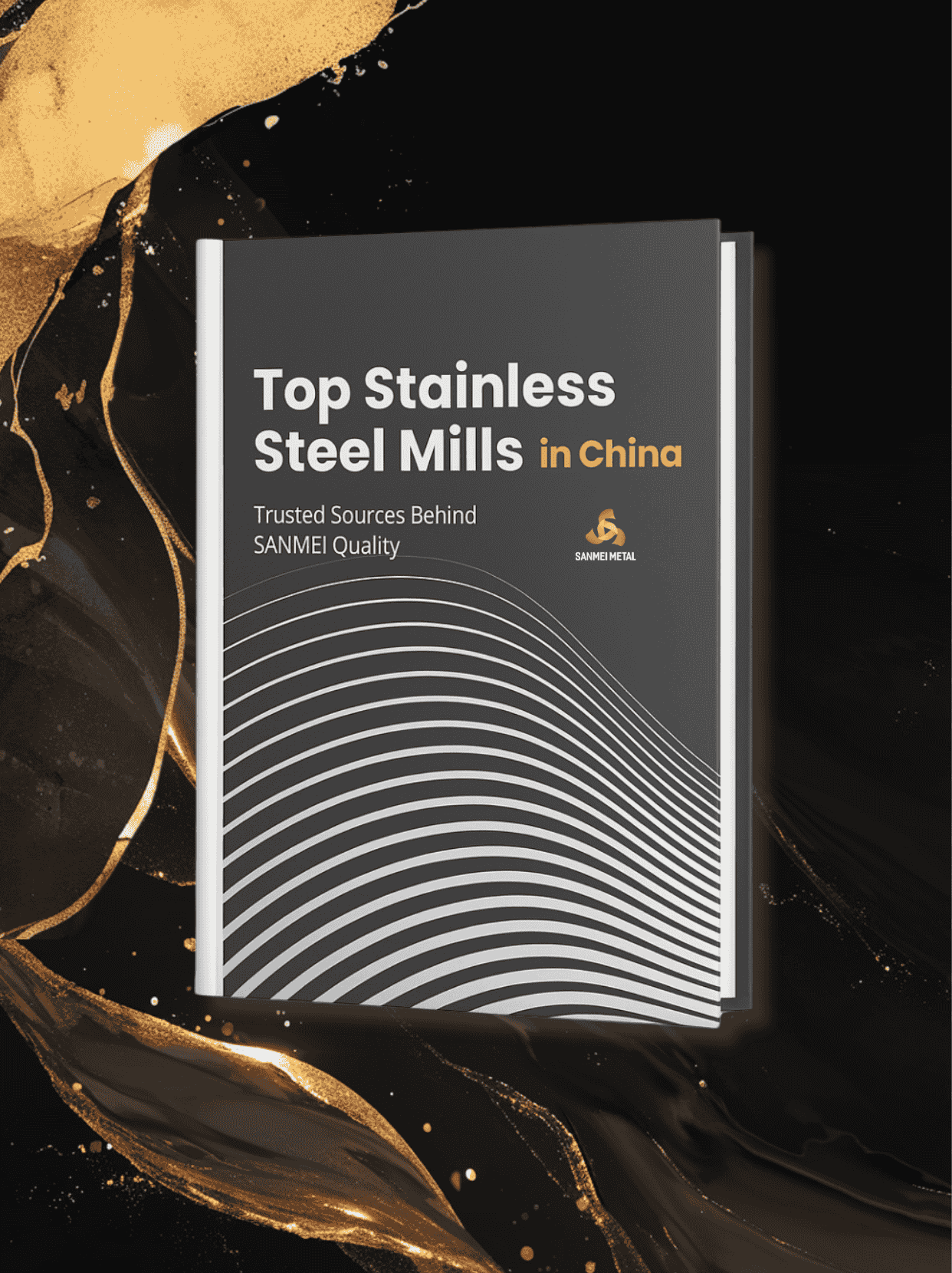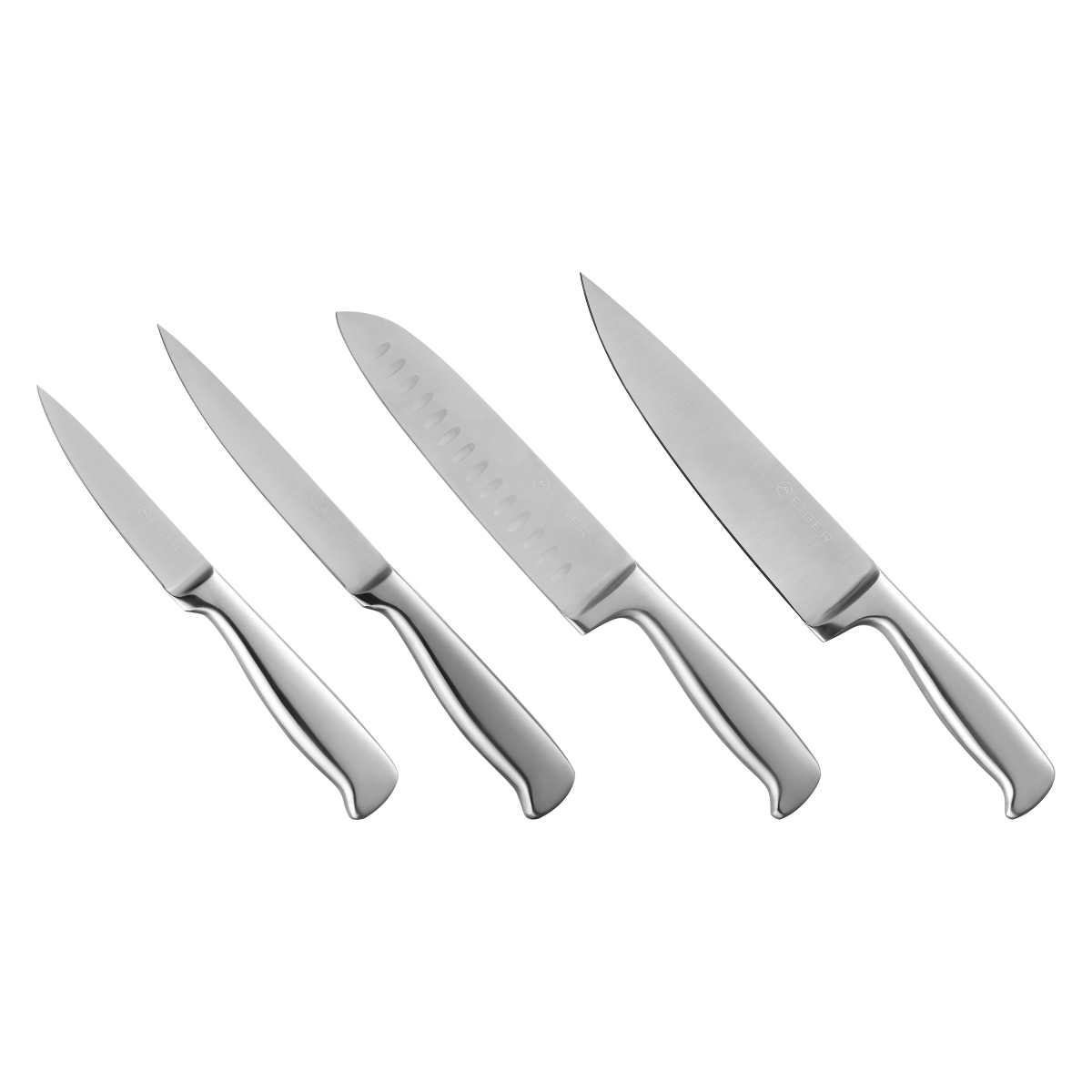
Dapatkan milikmu BEBAS Akses: Dokumen Pabrik Baja #1 Tiongkok
Berorientasi pada Pembeli: Cocokkan pabrik dengan kelas/finishing/lebar-tebal/aplikasi
BAOWUTsingshanLiscoTisco


Ketahanan korosi yang sangat baik untuk mencegah kontaminasi

Non-reaktivitas dengan makanan asam, asin, atau panas

Permukaan yang halus dan dapat dibersihkan untuk standar higienis

Daya tahan suhu tinggi untuk lingkungan memasak
Peralatan masak berbahan baja antikarat, seperti panci, pemanggang roti, dan panggangan, harus bebas racun dan aman untuk bersentuhan dengan makanan. Selain itu, faktor kinerja seperti ketahanan terhadap korosi, toleransi terhadap suhu tinggi, serta kemudahan pembersihan dan perawatan sangat penting untuk peralatan dapur berkualitas tinggi.
Mutu baja tahan karat 304, 304L, 316, 316L, 321, 309S, dan 310S dikenal mampu mempertahankan kinerja yang sangat baik di lingkungan bersuhu tinggi dan tahan karat, sehingga menjadikannya ideal untuk pembuatan berbagai peralatan memasak.
Perabotan dan peralatan dapur berbahan baja antikarat tidak hanya harus memenuhi persyaratan ketahanan terhadap korosi dan kekuatan tinggi, tetapi juga harus menarik secara estetika sebagai perabot pajangan. Selain itu, pembersihan dan perawatan yang mudah sangat penting di lingkungan dapur yang penuh minyak.
Mutu baja tahan karat 304, 304L, 409, 430, 2205, 2207, 436, 439, dan 441 memiliki ketahanan korosi dan sifat mekanis yang sangat baik, serta dapat mempertahankan tampilan menarik, sehingga cocok untuk pembuatan perabot dan peralatan dapur.
Baja antikarat yang digunakan dalam wadah dan perkakas penyimpanan makanan tidak boleh bereaksi dengan makanan. Selain itu, wadah ini membutuhkan ketahanan korosi yang tinggi karena adanya bahan tambahan dalam beberapa makanan. Mudah dibersihkan juga merupakan keuntungan signifikan dari bahan-bahan ini.
Baja antikarat yang digunakan dalam perkakas makan dan minum harus memiliki kekerasan dan ketahanan aus yang baik, terutama untuk pisau, yang membutuhkan kekerasan dan kekuatan tinggi. Bagi konsumen modern, perkakas makan dan minum bukan hanya sekadar wadah, tetapi juga barang dekoratif yang meningkatkan daya tarik estetika koleksi mereka.
| Nilai | Fitur & Aplikasi Utama |
|---|---|
| Seri 201 (J1 ~ J4) | Wadah kontak makanan jangka pendek yang hemat biaya |
| 304 / 304L | Standar industri untuk penggunaan food grade, tahan korosi dan panas |
| 316 / 316L | Performa tinggi untuk pemrosesan asam, asin, dan makanan laut |
| 321 / 309 detik / 310 detik | Tahan suhu tinggi, cocok untuk oven industri dan BBQ |
| 409L / 410 / 410 detik | Tahan lama, tahan aus, ideal untuk pisau dan peralatan makan |
| 420J1 / 420J2 | Kekerasan tinggi untuk alat potong dan perkakas |
| 430 / 436 / 439 / 441 | Kemampuan bentuk yang baik dan efisiensi biaya, banyak digunakan di dapur rumah |
| 2205 / 2207 | Baja dupleks untuk lingkungan pemrosesan yang keras, kekuatan yang sangat baik, dan ketahanan terhadap korosi |
Di SANMEI, kami menawarkan baja tahan karat food grade bersertifikat dalam bentuk koil dan lembaran, dengan permukaan akhir seperti 2B, BA, No.4, HL, dan semir cermin - ideal untuk peralatan dapur, perkakas, dan jalur pemrosesan makanan.
Namun, bagaimana Anda tahu apakah yang Anda beli benar-benar aman untuk makanan? Di pasar seperti China, di mana standar bahannya bervariasi, sangat penting untuk memverifikasi sumbernya. 👉 Apakah Baja Tahan Karat Food Grade yang Anda Beli di China Benar-Benar Food-Grade?
Baca panduan kami untuk mengetahui apa saja yang harus diperiksa - dan bagaimana memilih pemasok yang tepat.
Markas besar:
Pusat Pembuatan, No.142, Jalan Yuhe, Kota Lecong, Distrik Shunde, Kota Foshan, Provinsi Guangdong, Tiongkok. 528315
Pabrik: Liyuan Logistics City, Kota Chencun, Distrik Shunde, Kota Foshan, Provinsi Guangdong, Tiongkok. 528313
Basis Dukungan Lokal Australia: (Yatala, QLD) – Hadir pada tahun 2026